
GED Essay-Topics, Samples, And Tips
Last Updated on August 10, 2024.
This language Arts lesson is part of this website’s free online GED classes a nd practice tests, generously provided by the accredited comprehensive GED prep course created by Onsego.
Online GED Classes
A simple and easy way of getting your ged diploma..
Our free support is a great way to start with your GED prep, and if you like these free practice tests and video lessons, you may easily switch to Onsego GED Prep’s full-scope, accredited course to earn your GED fast!
One part of the GED Reasoning through Language Arts (RLA) test is writing a GED Essay, also known as the Extended Response. You have 45 minutes to create your essay. The GED essay is an argumentative essay.
A common method for writing this type of essay is the five-paragraph approach.
Writing your GED Essay is not about writing an opinion on the topic at hand. Your opinion is irrelevant. You are asked to determine and explain which of the arguments is better.
Click here for Language Arts Practice Tests
Onsego GED Prep
Online ged classes – fast and easy.
Prepare Quickly To Pass The GED Test. Get Your Diploma in 2 Months .
Table of Contents
- 0.1 Video Transcription
- 1 GED Essay Structure
- 2 GED Essay Topics
- 3 GED Essay Samples
- 4 Tips for Writing your GED Essay
- 5 How your GED Essay is Scored
Video Transcription
After reading the stimulus with two different arguments about a subject, your task is to explain why one of these arguments is better.
Remember, when writing your GED Essay, you are NOT writing your opinion on the topic. That’s irrelevant. You must write about why one argument is better than the other.
You are writing an analysis of the author’s two positions and explaining which argument is stronger. These two arguments are presented in the stimulus, so you don’t need to create any own examples.
So again, you only need to decide what argument is stronger and claim it and prove it. It is NOT about your opinion.
Since in your essay, you need to determine which argument is best supported, your claim should clearly state which of the two positions is stronger.
You will be provided with the stimulus material and a prompt.
The stimulus is a text that provides 2 opposing opinions about a certain subject. The prompt provides instructions and tells you what you need to do.
I’ll say it again because so many students make mistakes here, it’s NOT about your opinion on the topic but the subject that matters!
You need to analyze the arguments and determine which opinion is best supported throughout the text.
You are NOT asked which argument you agree with more, and you should NEVER respond with a personal opinion.
So, don’t use the word “I” such as “I think that…” “I agree because…” “In my opinion…”.
The GED essay is graded on a machine that uses algorithms to figure out your score.
So, no teacher will decide about the score in any way.
It’s very important that you remember this!
Let’s take a look at the structure, topics, and format of the GED Essay.
GED Essay Structure
Ged essay topics.
- GED Essay Sample
- GED Essay Scoring
- GED Essay Writing Tips
Remember: you need to analyze which of the presented arguments is better and explain why it’s better.
Likewise, make sure your reasons come from the text – you aren’t making up your examples; you’re talking about the ones in the passages.
How should you prove that one argument is stronger? – Look at the evidence in the text.
Did the author use a relevant statistic from a reliable source, or did he/she assume something with a hypothetical anecdote?
Once you know which is better supported, you’re on your way.
Keep in mind: Don’t Summarize!
It’s easy to substitute a simpler task (summarize each side) for the more complex task of evaluating arguments. But if all you do is summarize, your response will be considered off-topic and likely will not receive any points.
The GED Essay should contain:
- 4-7 paragraphs of 3 to 7 sentences each and 300-500 words in total.
- An essay (or response) that is significantly shorter could put you in danger of scoring a 0 just for not showing enough of your writing skills.
- As you read the stimulus material (text), think carefully about the argumentation presented in the passage(s). “Argumentation” refers to the assumptions, claims, support, reasoning, and credibility on which a position is based.
- Pay close attention to how the author(s) use these strategies to convey his or her position.
Every well-written GED essay has an introduction, a body, and a conclusion.
Your response will be an argument or an argumentative essay. Remember that you are NOT writing your opinion on the topic.
You are writing an analysis of two of the author’s positions and explaining which argument is stronger.
Things to keep in mind: the Extended Response (GED Essay) is scored by smart machines that are programmed to recognize correct answers. So, don’t try to be creative; just be correct. Also:
- Use proper grammar and sentence structure.
- Practice writing a 300 to 500-word essay.
Let’s look at the GED Essay structure: an introduction, a body, and a conclusion.
- The Introduction introduces the topic you are writing about and states your claim or thesis statement. Stand your position.
- The Body of the essay presents reasoning and evidence to support your claim. This is the longest part of the response and should be at least two paragraphs.
- The concluding paragraph sums up your main points and restates your claim.
Here are a few examples of GED Essay Topics. Click on the title to read a full stimulus and a prompt.
An Analysis of Daylight-Saving Time
The article presents arguments from both supporters and critics of Daylight-Saving Time who disagree about the practice’s impact on energy consumption and safety. Check here to read the full article.
Should the Penny Stay in Circulation?
Analyze the presented arguments and decide which one is better supported. Check here to read the full article.
Is Golf a Sport?
Proponents say that golf meets the definition of “sport.” Opponents say that golf better meets the definition of “game” than “sport. Analyze both opinions and determine which one is better supported. Check here to read the full article.
GED Essay Samples
Click here to access a sample of a GED essay with an explanation of the structure. Getting familiar with GED essay samples will help you plan your essay and understand what elements are important.
When reading the essay subject, you really should take the time to pull together your thoughts. By arranging your ideas rationally, you will be able to express your thoughts far better on paper. When you start writing, concentrate on the guidelines that you came to understand in English class.
Pay attention to English language usage (grammar); you must use the right punctuation and capitalization and decide on suitable word solutions.
Check here to read a GED Essay Sample with our comments.
Tips for Writing your GED Essay
1. Make sure you read the stimulus and prompt cautiously
It’s good to practice this carefully. Check out each question carefully and take a little time to figure out the topic and what kind of answer will be expected.
It is important to read the questions meticulously.
Usually, students simply run over stimulus and prompt and begin to write immediately, believing that they will save time this way.
Well, this actually the most undesirable thing to do. Take a short while and try to understand the questions completely in order to respond to them appropriately. If you wish, highlight the essential words and phrases in the stimulus to be able to look at it from time to time to be certain you stick to the topic.
2. Sketch an outline for the essay
In general, you will only need a few minutes to plan your essay, and it is imperative to take that time. As soon as you grasp the questions entirely, and once you have scribbled down some initial ideas, make an outline of the essay and follow that.
Plan an introduction, body, and conclusion. Following this process is going to save you a lot of time and it helps establish a rational development of thoughts.
3. Stick to the subject
Each paragraph in the body of your response should explain why a piece of evidence supports your claim or disputes the opposing claim to explain your evidence.
You can describe or restate it. This shows that you understand precisely what it means and how it relates to your claim.
Cite the mentioned details or facts of a specific point and relate them to your claim.
Your response should include evidence from both passages and explain what strong evidence supports one argument and why faulty evidence weakens the other argument.
4. Proofreading and Revision
By the time you completed writing your essay, you should go back to the beginning and read your essay carefully again, as you quite easily could have forgotten a comma or have misspelled a word while writing your essay. See also this post -> Is the GED Language Arts Test Hard?
While rereading your essay, pay close attention to whether your essay provides well-targeted points, is organized clearly, presents specific information and facts, comes with proper sentence construction, and has no grammar or spelling mistakes.
How your GED Essay is Scored
Your GED essay is scored by smart machines that are programmed to recognize correct answers. So don’t try to be creative; just be correct.
They will be using five criteria to assess your essay.
- Organization: were you clear about the essential idea, and did you present a well-thought strategy for composing your essay?
- Clear and swift response: did you deal with the subject adequately, without shifting from one focal point to another?
- Progress and details: did you apply relevant examples and specific details to elaborate on your original concepts or arguments, as opposed to using lists or repeating identical information?
- Grammar Rules of English: did you use decent writing techniques like sentence structure, spelling, punctuation, syntax, and grammar, and did you shape and edit your essay after you penned the first draft?
- Word choice: how far did you choose and employ suitable words to indicate your points of view?
Your 45 minutes will go quickly, so focus on these important points to get the best score.
What’s important is to make a clear statement about which position is better supported. Write clear sentences and arrange paragraphs in a logical order.
GED testing includes four modules (independent subtests) in Mathematical Reasoning (Math), Reasoning through Language Arts, Science, and Social Studies that can be taken separately. You should study very well, be effective on test day, and pass the subtest(s) you registered for.
GED writing for essays may be a bit tricky, but you can store all this information for proper learning on a list and change to proper write essay techniques before test day has arrived. Just practice a lot, and you’ll see that it’ll be getting better and better. So now you know all about writing the GED Essay.
How to Write & Pass a GED Essay
By: Jen Denton, Student Success Coach on January 3, 2023 at 3:21 AM

The GED essay intimidates a lot of people. Writing a whole essay from scratch in 45 minutes or less can be tough, but it doesn't have to be. This GED essay writing guide will help you know what to expect and how to pass the written portion of the test. Learn all about the GED extended response with examples, tips, and a breakdown of everything you'll be graded on.
Table of Contents
What is the ged essay, example ged essay questions, example ged essay, ged essay practice, ged essay structure, how is the ged essay scored, 8 tips to help you pass the ged essay.
The GED test is made up of four subjects: mathematical reasoning, social studies, science, and reasoning through language arts (RLA). The RLA subject test includes two parts, one of which is the GED extended response, sometimes called the GED essay. You will have 45 minutes to complete the essay to the best of your ability. If you don’t finish in time, don’t worry! The essay is only worth 20% of your final RLA score, so you can still pass the test even if you don’t get a high score on the essay.
The extended response can be on a variety of topics, but it will always follow the same format. You will be given two different articles on the same topic, usually argumentative essays with a firm position. You will be asked to evaluate the two arguments and write your own argumentative essay determining which article presented the strongest position. The essay should be 3-5 paragraphs long, with each paragraph between 3-7 sentences.
All GED essay questions will ask you to read and evaluate two passages that take different stances on the same topic. Essays should determine which passage presents a stronger argument and back up that claim with analysis of evidence from the passages.
Here is an example GED essay question:
Analyze the arguments presented in the press release and the letter to the editor. In your response, develop an argument in which you explain how one position is better supported than the other. Incorporate relevant and specific evidence from both sources to support your argument.
Remember, the better-argued position is not necessarily the position with which you agree. This task should take approximately 45 minutes to complete. 1
1 "Extended Response Scoring - GED." https://ged.com/wp-content/uploads/extended_response_scoring.pdf . Accessed 25 Feb. 2021.
The following is an example high scoring essay:
Both the press release and the letter to the editor offer positions that are supported by both fact and opinion. The press release seeks to exhort the new bill for expansion of Highway 17, while the letter argues that the passing of the bill could prove detrimental to the district. While both sides make an acceptable case, the latter provides a stronger argument.
One example of the letter’s stronger argument is the explanation that federal tax dollars pay for the road, as it will incorporate six different states, therefore eliminating this particular state’s ability to strike the bill down. This proves, with factual information, that the district did not have a fair say in the bill. The notion that few residents will use the road that their tax dollars are providing is an opinion. However, a resident and small-business owner in the town is more credible in the awareness of the town’s concern, as compared to a representative who attended a few meetings in the town hall.
Another example of the better supported argument in the letter is the reference to the construction jobs as temporary. The press release praises the new jobs created by the highway construction, as this is a valid point. However, the author of the letter is correct in the fact that the jobs will not create a boom in the district’s economy, or fill in the gap caused by the closures in the manufacturing plants, as the press release leads listeners to believe. The road construction does not solve the long-term issue of unemployment in the town. In addition, the author of the letter counters the argument that new motels, restaurants, and gas stations along the highway will create permanent jobs for the residents of the town. She explains that, “…only minimum wage jobs will remain.” This is a valid argument also, as unemployed residents that need enough income to support a household would not be much better off. Providing restaurant or motel jobs is very unlikely to feed or support an entire family. It will not pick up the laid-off employees of the manufacturing plants, who may have worked for many years towards promotions and a pension.
Another example of the letter’s stronger argument is the author’s explanation of the 2001 study. She concedes that the representative is correct in citing that bypasses are proven to reduce noise and traffic in town, but she argues that the study shows a negative effect on local businesses. This piece of the study was not mentioned by Representative Walls or the press release, and it is a proven fact. This draws more credibility to the argument in the letter. Also, although it is a speculation, it is more reasonable that traveler’s will stick to the main highway and not venture miles off their path into small town when chain gas stations, restaurants, and motels are conveniently located directly at the highway exits. It is less likely that old roads in the towns will become historical locations, attracting tourists and boosting small business sales.
Despite the argument and evidence given by the press release, it appears that the letter to the editor offers a stronger case. The author’s ideas are backed up by logical explanations and facts with a few speculations. Though the press release offers some fact, it is mainly specked with anticipations and hopes, driven to overshadow any doubts and quell any concerns. The letter is penned by a resident of the town and owner of a business, subject to firsthand opinions of the citizens of the district. The press release is pushed by an elected representative who, upon visiting the town a number of times and consulting a small percentage of the constituents, is convinced she understands the majority. Although both parties may very well have the best interests of the district in mind, and either position could be correct, it is clear that the letter provides a better-supported argument. 2
2 "Extended Response Scoring - GED." https://ged.com/wp-content/uploads/extended_response_scoring.pdf . Accessed 25 Feb. 2021.
For GED essay practice, try writing your own essay based on the example above. Set a timer for 45 minutes and do your best to write an essay with your own analysis and ideas.
You can practice more writing skills with this free test or enroll today in the GED Academy to get access to more GED essay prompts and personalized feedback from GED Essay graders.
The structure for the GED essay can take a few different forms, depending on how you decide to organize your ideas. No matter what, it should include an introduction paragraph, 1-3 body paragraphs, and a conclusion paragraph. To receive a passing score, your essay must present a clear topic supported by details from both passages. Include your main idea in an introductory paragraph. In middle paragraphs, make connections between your details and your main idea. Your conclusion should also fit logically with the details.
The introduction should demonstrate your understanding of the overall topic based on the passages you read and a claim. The claim is a statement of your argument. It doesn’t need to go into detail, but should state your essay’s position on the questions presented.
The body paragraphs will go into more detail. They will include a combination of summary, analysis, and evidence to back up your claim. Be sure to include analysis of both passages.
The conclusion should explain the result of your findings and reinforce your original claim.
You can earn up to six points on the GED extended response. There are three main categories your essay is graded on, and you can earn up to two points for each.
Creation of arguments and use of evidence: Craft a strong claim and use analysis of the arguments and evidence from the passages to support it.
Development of ideas and organizational structure: Write a substantial essay with clear transitions between ideas, including a strong introduction and conclusion.
Clarity and command of standard English conventions: Use appropriate language and demonstrate strong language and grammar skills.
The extended response accounts for 20% of the total RLA score.
- Read all the instructions. The most common reason people score low on the essay is because they misunderstand the prompt.
- Make an outline. After reading the passages and the prompt, write down your ideas and organize them during your pre-writing.
- Make a list of evidence. When you read the passages, take notes on the important details you want to remember later, so you don’t have to spend time searching for it later.
- Write your introduction last. A lot of people get tripped up by how to start the essay. If that’s you, just skip this step and go back to it once you’ve written the rest of the essay.
- Write first, edit later. You only have 45 minutes, so use your time wisely. Write your first draft of the essay before you start fine-tuning and editing it. Save that for your remaining time so you don’t turn in a half-written essay.
- Use formal language. Avoid “I” statements like, “I think” or casual language like slang.
- Don’t check the clock. Time always seems to go faster when you need it to go slow. Every time you look at the clock, that’s breaking your focus on your essay.
- Practice! The only way to get better at writing essays is to write more essays. Practice using the GED Writing Practice Test , and remember to time yourself!
Related Posts
How to drop out from high school successfully in 2024, how to study for the ged: 6 proven tips for 2024, ged reading & writing study guide 2024 [ged academy].

GED Extended Response Essay Prompts & Examples
A quick guide to writing an extended response for the ged language arts test.
GED® Reading & Writing Practice Test ( 25 Questions )
GED® Reading & Writing Practice ( Tons Questions )
GED® Reading and Writing Lessons ( 10 Lessons )
Check out our other Free GED© Practice Test
Many students fear the writing part of the GED test. And we understand. After all, it takes effort and time to organize your ideas, fix sentence structures, and ensure that grammar, punctuation, capitalization, and spelling are correct. With only 45 minutes to complete your essay, how will you be able to finish your piece? Thankfully, there are ways to make this part easy for you. You don’t have to be a gifted writer to write succeed in writing a winning essay for the Extended Response portion of the GED writing test. There are tips to succeed in writing your essay.
Start reviewing with our helpful contents: GED Reasoning Through Language Arts Guide
What’s in the GED Writing Extended Response Portion of the Test?
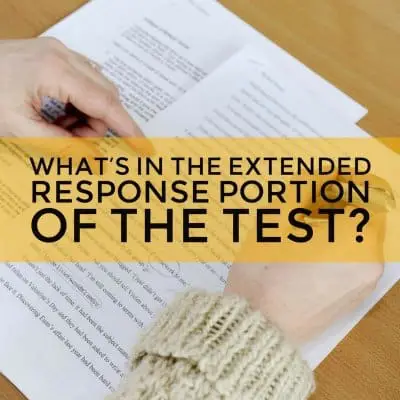
This test will check how well you create arguments and use evidence. Also, it would also test your clarity and command of Standard English language.
Quick Tips to Remember When Writing Your Essay:

- Take a deep breath. Nervous about the test? Ease anxiety by taking deep breaths before writing your essay. Being stressed while writing might keep your focus away from the task and affect the quality of your essay.
- Read the two passages carefully . Make sure you understand each passage before choosing your position.
- Make an outline . Don’t write right away. Create an outline first. Choose a position that you can easily defend based on what you’ve read, then list down the main points to support this position.
- Your essay should have:
- 1. An introduction that states your main argument 2. At least 3 paragraphs with your supporting evidence 3. A conclusion that restates your main argument and main points.
- Focus on the first and last paragraphs first . This will help you stick to your argument and main points.
- Be clear . The paragraphs in between your first and last paragraphs should clearly explain your main points. Start each paragraph by stating the main point that you want to talk about.
- Proofread your work . Check your work for grammar and spelling errors. Improve sentence structures with the time that’s left.
Keep in mind that the saying, “practice makes perfect” applies here. Mastering essay writing takes a lot of practice and reading. Begin practicing your writing as well improving your comprehension skills with our Free GED Practice Tests for Language Arts. We also recommend reading high-quality newspapers, publications, and literary pieces to help build your English writing skills.
Related Topics:
- 7 Top Jobs For GED Graduates: Earn Six Figure Income Without A College Degree
- GED Reading Practice Test
- Reasoning Through Language Arts
- GED Reasoning through Language Arts
- GED Reasoning through Language Art PRACTICE TEST
- GED Math Practice Questions | Fractions
- GED® Reasoning Through Language Arts Practice Tests
- GED Science Practice Questions | GED Study Guide
Leave a Reply
Your email address will not be published. Required fields are marked *
Save my name, email, and website in this browser for the next time I comment.

GED Essay: Everything You Need To Know In 2024
Learn all you need to know about the GED essay, its structure sample, topics, tips, and how it is scored in this post.
January 1, 2022
The GED essay is intimidating to many people. Writing an entire essay from scratch in 45 minutes or less may seem difficult, but it does not have to be. This GED essay writing overview will help you prepare for and learn about the written section of the exam . In this post, Get-TestPrep will show everything you need to know about GED essays , including their structure, sample topics, tips, and how they are stored .
What Is The GED Essay?

The GED exam consists of four subjects : Mathematical Reasoning, Social Studies, Science, and Language Arts Reasoning (RLA ). The GED extended response , sometimes known as the GED essay, is one of the two portions of the RLA subject test. You’ll have 45 minutes to finish the essay to your best capacity. Don’t worry if you don’t finish on time! Because the essay accounts for just 20% of your ultimate RLA score, you can still pass the test even if you don’t receive a high essay score.
The GED extended response can cover a wide range of topics, but it will always be formatted in the same way. You will be assigned two articles on the same topic, which will typically be argumentative essays with a firm position. You’ll be asked to assess the two arguments and create your own argumentative essay based on which article delivered the more compelling argument. The essay should be three to five paragraphs long, with each paragraph including three to seven sentences.
GED Essay Structure
An introduction, a body, and a conclusion are included in every well-written GED essay. You have to write an argument or an argumentative essay. Keep in mind that you are not expressing your own view on the subject. You’re analyzing two of the author’s points of view and determining which one is more compelling. Keep in mind that the Extended Response (GED Essay) is graded by machine intelligence that has been designed to detect the right responses. So, instead of trying to be creative, simply be accurate. Also:
- Make sure you’re using proper grammar and sentence structure.
- Practice writing a 300-500 word essay.
Let’s take a look at the format of a GED Essay : an introduction, a body, and a conclusion.
- The introduction outlines your claim or thesis statement and explains the topic you’re writing about. Maintain your position.
- The body of the essay includes facts and arguments to back up your claim. This section of the response should be at least two paragraphs long.
- The concluding paragraph restates your claim and summarises your important points.
GED Essay Topic Examples
Here are a few GED Essay Topics to get you started:
Topic 1: An Analysis of Daylight-Saving Time
The article presents arguments from proponents and opponents of Daylight Saving Time, who disagree on the practice’s impact on energy consumption and safety.
Topic 2: Should the Penny Stay in Circulation?
Analyze the arguments offered and pick which one has the most support.
Topic 3: Is Golf a Sport?
Golf , according to proponents, satisfies the criteria of “sport.” Opponents argue that golf more closely resembles a “game” than a “sport.” Analyze both points of view to see which one has the most support.
Visit our website for more topics as well as full articles on each topic and take our free latest FREE GED practice test 2024 to get ready for your exam!
GED Essay Examples
Getting to know the GED essay sample can assist you in planning your essay and determining which elements are most vital.
When reading the essay topic, you should truly take your time to collect your views. You will be able to articulate your views better on paper if you organize your thoughts properly. Concentrate on the standards that you learned in English class before you begin writing.
Pay attention to how you use the English language (grammar); you must use proper punctuation and capitalization, and you must use appropriate word solutions.
Tips For Writing Your GED Essay
Make sure you carefully read the stimulus and prompt.
Putting this into practice is an excellent idea. Examine each question carefully and set aside some time to determine the topic and the type of response that will be requested. It is critical to read the questions thoroughly. Students frequently skip past the stimulus and prompt and get right into writing, assuming that they will save time this way.
This is, by far, the most uninteresting thing to do. Take a few moments to attempt to fully comprehend the questions so that you can reply accurately. If you like, underline the important words and phrases in the stimulus so you can go over it again later to make sure you’re on track.
Make a rough outline for the GED language arts essay
In general, planning your essay will only take a few minutes, but it is critical that you spend that time. Make an outline of the essay and follow it as soon as you have a complete understanding of the questions and have scribbled down some early ideas.
Make an outline for your introduction, body, and conclusion. Following this procedure will save you a lot of time and aid in the development of a logical thought process.
Keep your focus on the topic
To describe your evidence, each paragraph in the body of your response should explain why a piece of evidence supports your claim or disputes the opposing claim. You have the option of describing or restarting it. This demonstrates that you know exactly what it means and how it applies to your claim. Refer to the specifics or facts of a certain issue that you’ve discussed and tie them to your claim.
Include evidence from both passages in your response, and explain why strong evidence supports one thesis and why flawed evidence undermines the other.
Revision and proofreading
By the time you’ve finished writing your essay, you should go back to the beginning and reread it attentively, since you may easily have missed a comma or misspelled a term while doing so.
Pay great attention when rereading your essay to see if it has well-targeted arguments, is arranged properly, contains particular information and facts, has good sentence construction, and has no grammatical or spelling mistakes.
Learn more about how to practice GED essays as well as the whole Language Arts section in GED Language Arts Study Guide
How To Write a GED Essay?
When writing the GED essay, you should allocate the time as follows:
- 3 minutes to read the directions and the topic
- 5 minutes of prewriting (freewriting, brainstorming , grouping, mapping, etc.)
- 3 minutes to organize (create a thesis statement or controlling idea, and summarize important points)
- 20 minutes to draft (write the essay)
- 8 minutes to revise (go over the essay and make adjustments to concepts)
- 6 minutes to edit (check for grammatical and spelling errors).
How Your GED Essay Is Scored?
Smart machines that are designed to detect the right answers score your GED essay. So don’t try to be creative; just be accurate.
They will evaluate your essay based on five factors.
- Organization : did you give a well-thought-out approach to writing your essay and were you clear on the main idea?
- Clear and swift response: Did you deal with the matter appropriately, without straying from one emphasis point to another, with a clear and quick response?
- Progress and specifics: instead of utilizing lists or repeating the same material, did you use relevant instances and particular details to expound on your initial notions or arguments?
- Grammar Rules of English: Did you apply proper writing strategies such as sentence structure, spelling, punctuation, syntax, and grammar, and did you shape and revise your essay after you finished the initial draft?
- Word choice : How well did you pick and use appropriate phrases to express your points of view?
Your 45 minutes will fly by, so focus on these key elements to get the best score possible. What is more important is to state unequivocally which side is more popular. Check that your phrases are clear and that your paragraphs are organized logically.
Each of the four modules (independent subtests) in Mathematical Reasoning (Math), Reasoning via Language Arts, Science, and Social Studies can be taken independently. To pass the subtest(s) for which you registered, you must study thoroughly and be efficient on test day. Consider taking our GED Language Arts Practice Test for the Language Arts section.
GED essay writing can be difficult, but you can keep a list of everything you need to know and switch to proper essay writing approaches before the exam. Simply practice a lot and you’ll notice that it gets better over time. So you’ve learned everything there is to know about writing the GED Essay .
How to write an essay for the GED?
- Read through all of the instructions.
- Create an outline.
- Make a list of all the evidence.
- Last, write your introduction.
- Write first, then edit.
- Make use of formal language.
- Don’t look at the time.

Is there an essay portion on the GED test?
How is the ged essay graded.
The essay is graded on a four-point scale by two certified GED essay readers. The scores of the two GED readers are averaged. If the essay achieves a score of 2 or above, it is merged with the language arts multiple-choice score to generate a composite result.
Final Words
In conclusion, this guide on the GED essay provides valuable insights and strategies to help you excel in the GED essay section. By understanding the structure of the GED essay , practicing effective writing techniques, and familiarizing yourself with the scoring rubric, you can approach the GED essay with confidence and achieve a successful outcome. Remember to plan your essay, organize your thoughts, and support your ideas with relevant examples and evidence. Additionally, refining your grammar and punctuation skills will enhance the overall quality of your writing. With consistent practice and a thorough understanding of the expectations for the GED essay, you can showcase your writing abilities and earn a strong score on the GED essay.
Eligibility Requirements For GED In District of Columbia
November 25, 2022

Eligibility Requirements For GED In New York

Eligibility Requirements For GED In Wyoming
You may learn more about how to obtain a GED in Wyoming by reading the answers to the questions related to GED requirements in Wyoming we receive below.
September 19, 2022
| '); document.write(' '); } --> '); document.write(' '); } --> | |





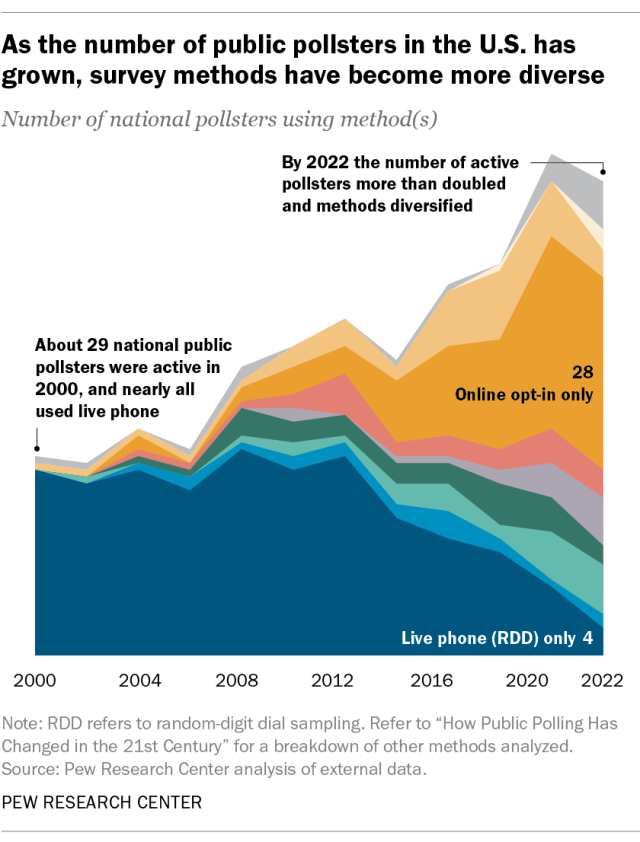

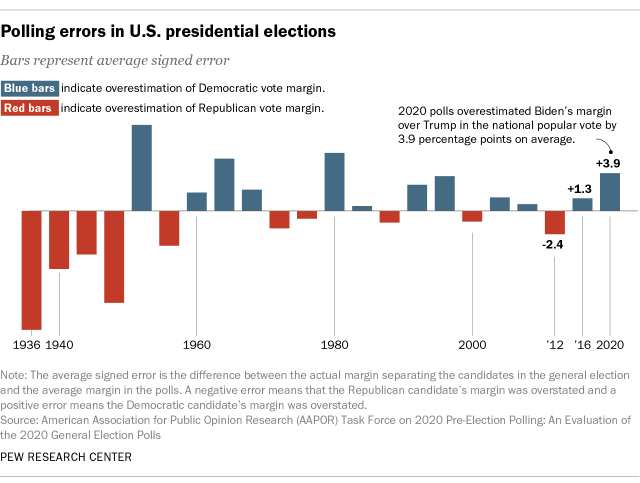
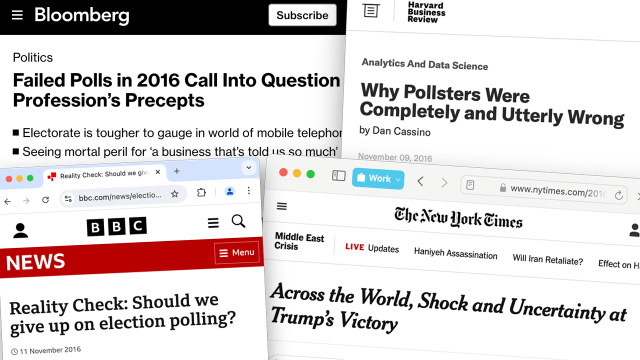
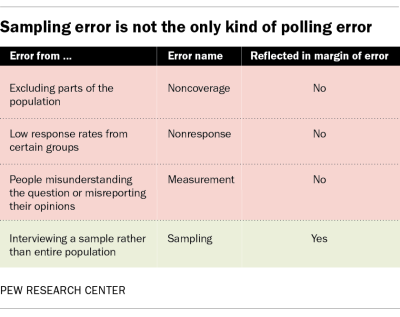



IMAGES
VIDEO
COMMENTS
Follow this strategy when writing your GED Essay: Step 1 Read and Analyze the Stimulus Passages (5 Minutes). Start by reading both of the passages. Make sure you understand the issue and the position that each passage is taking. Try to ignore your own personal feelings on the topic as you read.
This is simply an essay question. You will have 45 minutes to type your answer. This is a tricky part of the GED test, so it's very important to familiarize yourself with this task ahead of time. First read our essay guide and then review our sample question. Try typing out your own essay before you look at our sample response.
Here are a few examples of GED Essay Topics. Click on the title to read a full stimulus and a prompt. Topic 1. An Analysis of Daylight-Saving Time. The article presents arguments from both supporters and critics of Daylight-Saving Time who disagree about the practice's impact on energy consumption and safety.
For GED essay practice, try writing your own essay based on the example above. Set a timer for 45 minutes and do your best to write an essay with your own analysis and ideas. You can practice more writing skills with this free test or enroll today in the GED Academy to get access to more GED essay prompts and personalized feedback from GED ...
Step 1: Read the instructions for the Extended Response task. Step 2: Read the two passages. Step 3: Review the sample extended response that received full score points (6 points out of 6 possible) Step 4: Understand the reasons why the response received full score points. Step 1: Read the instructions.
There are is now an extended response (essay) question on the GED Reasoning Through Language Arts Test (RLA). You are given 45 minutes to type your GED Essay on the RLA test. Read through our tips and strategies, use our sample prompt to write out a practice essay, and then examine our essay examples to gauge your strengths and weaknesses. GED.
The following is an example of a high-scoring essay response to our free practice GED Essay Prompt. Below our GED sample essay is a brief analysis justifying its perfect score. Police militarization is a hot-button topic these days. Some believe that criticizing the actions of the police hurts their ability to do their job, while others argue ...
GED writing practice tests and Tips to succeed in writing your essay with only 45 minutes to complete. Practice tests to improve your GED score. Start now! A Quick Guide to Writing an Extended Response to the GED Language Arts Test. This test will check how well you create arguments and use evidence. Also, it would also test your clarity and command of Standard English language.
The GED essay is intimidating to many people. Writing an entire essay from scratch in 45 minutes or less may seem difficult, but it does not have to be. This GED essay writing overview will help you prepare for and learn about the written section of the exam.In this post, Get-TestPrep will show everything you need to know about GED essays, including their structure, sample topics, tips, and ...
Use these free videos, guidelines and examples to prepare and practice for the essay section of the Language Arts test. Videos: How to write a great GED extended response Overview of the GED Extended Response Format (1:28)
GED Essay Practice Question. As a part of the GED Reasoning Through Language Arts test, there is a 45-minute extended response question. For this question, two articles are presented that discuss a topic and take opposing positions. You are required to write an essay arguing that one of the positions is better-supported than the other.
Sample GED Essays. Below are an essay topic and four sample essays with the holistic scores they received from the GED Testing Service. Readers may use these samples as they familiarize themselves with the Essay Scoring Guide. Notice that there is no required minimum number of words. The essays with higher scores have are a clear organization ...
Writing Guidelines. Rely upon these timing guidelines as you write your GED essay: PLAN — Spend 10 minutes reading the source material and organizing your essay response. PRODUCE — Spend 30 minutes writing your (ideally) 5-paragraph essay. PROOFREAD — Save 5 minutes for re-reading what you wrote and making necessary changes and improvements.
A 2012 report on game-based learning notes that "there is research evidence demonstrating positive impact on higher order skills such as decision making and problem solving.". The report adds that using video games can also reduce training time, an advantage for both managers and employees.
Here, at HowtoPasstheGED.com, a five-paragraph essay will be used as a framework for writing an Extended Response. Five-Paragraph Essay - Outline. Paragraph 1: Introduction of your position with three supporting points. Paragraph 2: Discussion of first point. Paragraph 3: Discussion of second point.
Extended Response Scoring Tool. The GED Ready® Practice Test for language arts gives students a chance to practice their writing skills by completing an Extended Response (ER) question. This tool is designed to help you score and provide meaningful feedback to your students about their written response, located in their GED Ready Score Report.
If you had left the essay blank, your score would have been much lower, though likely passing still, based on the evidence of your strong reading and grammar skills. I have been a GED teacher for 18 years & have taught essay writing for the GED, and I also tutor college students on their writing daily at the college I work for.
Commentary. This sample essay would receive a perfect score on the GED. The writer clearly reviewed the prompt and outlined the argument before writing. Generally, the response exhibits the following organization: Paragraph 1 — Introduction. Paragraph 2 — Logical reasoning. Paragraph 3 — Statistics. Paragraph 4 — Ethics.
This chapter presents history, economic statistics, and federal government directories of Novosibirsk Oblast. Novosibirsk Oblast is situated in the Western Siberian Plain.
All good polling relies on statistical adjustment called "weighting," which makes sure that the survey sample aligns with the broader population on key characteristics. Historically, public opinion researchers have adjusted their data using a core set of demographic variables to correct imbalances between the survey sample and the population.
GED Social Studies Test; GED Extended Response Practice. GED Essay Writing Guide; GED Essay Practice Question; GED Essay Sample Response; GED in Spanish. GED En Español; GED Test. The GED is the leading high school equivalency test. More than 20 million people have taken the GED, and the GED transcript is accepted by 97% of colleges and ...
1. Regulatory Document: 057d2710-0e61-42ce-875d-9c0bab26a2c2. Plancode: 0000. On this page you can find postal codes and post offices in Novosibirsk Gorod, Novosibirskaa Oblast', Russia.
Because the study had a sample size that was too small for the testing of normality, 95% confidence intervals (CIs) were computed by the Clopper-Pearson method, which are also called an "exact" binomial interval (Agresti and Coull, 1998; Derek and Zelmer, 2013). All statistical analyses were performed in Microsoft Excel® software. 3.